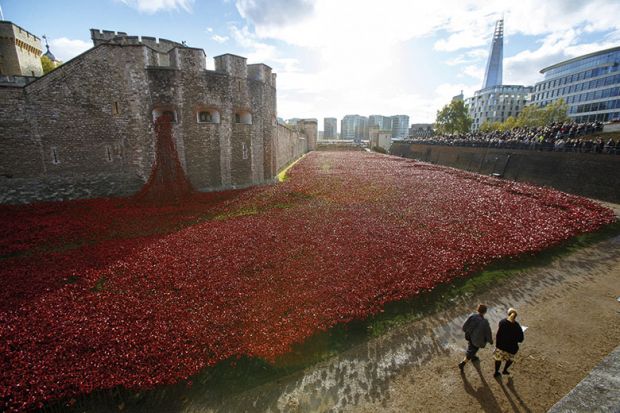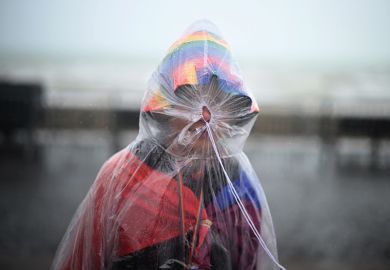Down the shaky line in morning fog the voices were ringing out: “Fix bayonets. Fix bayonets!” We could see the chalk hills to the east where we had been told the German guns were dug in, and the muddy river between. But this was actually Sussex in the mid-1990s – my history teacher had got bored with trying to make the class concentrate on sources in a textbook and instead had taken us out into the playground. Why? Because we should “remember by imagining”.
The new paperback edition of Jay Winter’s War beyond Words is a lavishly illustrated, troublingly intriguing and strangely complex book, all about acts of remembering by imagining – and the materials that imagination needs. It is divided into two parts, each with multiple arguments and examples; together, they trace how in the 20th century artists of all kinds have reimagined conflict – and how the purpose of remembering has changed.
Winter is one of the most significant cultural historians of war and memory, but this book ranges far beyond his usual terrain of the First World War and literary texts. It deploys questions about the depiction of the human face, such as in Gerhard Richter’s blurred pictures with their ambivalences and time-as-grainy-texture. But it also tries to track how memorialisation has changed linguistically, with multiple Google Ngrams (charts showing the historical frequency of specific words). The argument here is about the problematic nature of the terms “martyr” and “martyrdom”, with their theological frames for justifying death; but it also extends into making comparisons: “glory” is put alongside “glorie”.
Such trawls of data can get cultural history only so far, a fact that Winter notes himself; and such broad-front tactics are matched by individual stories. He is especially perceptive about the painful complexities especially inherent in any 20th-century German tradition of memorialisation. The sculptor Käthe Kollwitz is rightly given prominence; but so are the abstracted terrors of Anselm Kiefer with his strung-together bundles of lead, copper, iron and charcoal.
A chapter called “the geometry of memory” shows how in recent years solemn verticality has given way to varieties of the horizontal: the sunken maze, the ditch filled with objects, the field of ceramic poppies. Winter considers memorials to the Shoah, and also the French L’Anneau de la mémoire (the Ring of Memory) which was inaugurated in 2014. This is a huge metal-and-concrete ring half cut into, and half suspended out of, a hill near Nord-Pas-de-Calais. This design is a particular ideological choice from a specific European moment, for the hill was fought over repeatedly in the First World War and the panels of the memorial listing the 579,606 casualties in the region make no distinction of nationality or rank.
There are, inevitably with a book of this kind, limits and elisions; and works discussed pivot on European and American responses. Winter does not attempt to marshal his vast array of shocks, melancholic echoes and haunting icons into a single argument. So much the better, for the uses of memory, and the politics of contested remembering, are better served by a plurality of possibilities: “imagining war is the curse of our violent world”.
Leo Mellor is Roma Gill fellow in English at Murray Edwards College, Cambridge.
War beyond Words: Languages of Remembrance from the Great War to the Present
By Jay Winter
Cambridge University Press
256pp, £12.99
ISBN 9781108466615
Published 8 November 2018
Register to continue
Why register?
- Registration is free and only takes a moment
- Once registered, you can read 3 articles a month
- Sign up for our newsletter
Subscribe
Or subscribe for unlimited access to:
- Unlimited access to news, views, insights & reviews
- Digital editions
- Digital access to THE’s university and college rankings analysis
Already registered or a current subscriber? Login








